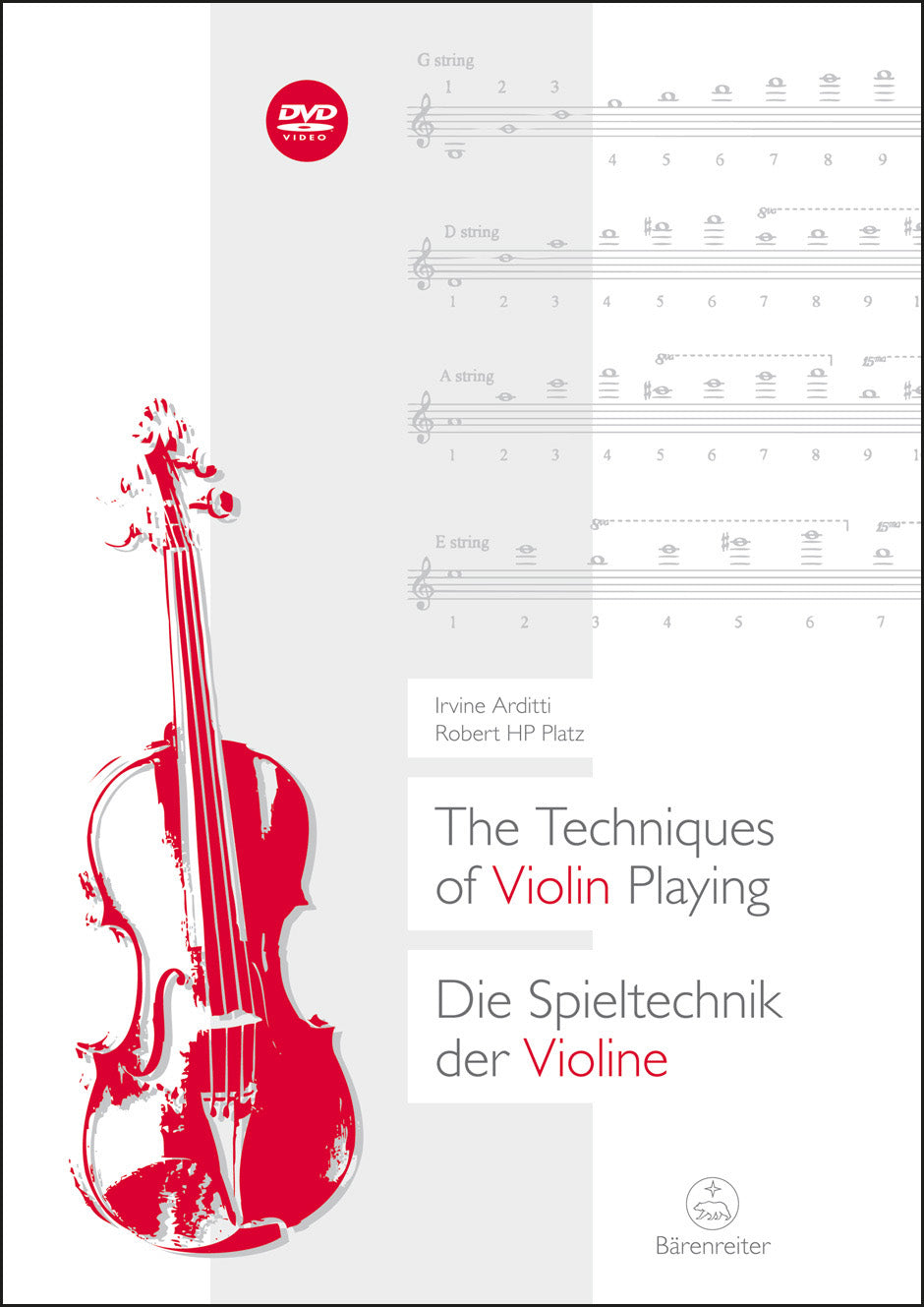The Techniques of Violin Playing
In stock and typically ships within 1 business day.
- Authors: Irvine Arditti, Robert H.P. Platz (1951-)
- Format: Book & DVD
- ISBN:
- Size: 8.3 x 11.4 inches
- Pages: 117
Description
Irvine Arditti who is an extraordinary violinist, a specialist for contemporary music and the leader of the phenomenal Arditti Quartet, worked together with the composer and conductor Robert HP Platz to produce this book on contemporary violin technique. It presents detailed explanations of the technical possibilities of the violin for performers and composers. This publication takes into account the virtuosity of a new generation of soloists. These are soloists who with their exceptional ability, have succeeded in paving the way for a greater understanding of classical and contemporary music.
The chapters on bowing techniques, vibrato, pizzicato, glissando, flageolet, tablatures, rhythm and electronic sound production are illustrated with numerous musical examples and diagrams. Particularly helpful is the accompanying DVD, where Arditti demonstrates and explains the described techniques. Chapters on the basics of violin technique and on Irvine Arditti's personal experience with notable composers make the book equally interesting for non-violinists.
The authors Irvine Arditti, born in London in 1953, became the Principal Concert Master of the London Symphony Orchestra at the age of 25. He left the orchestra in 1980 to devote his time to his quartet. in recent decades Irvine Arditti has premiered a large number of important works, many of which were written for him. Amongst them are the violin concertos by Xenakis, Hosokawa and Ligeti, Ferneyhough's "Terrain" and Sciarrino's "Le Stagioni Artificiali". As well as having recorded over 180 CDs with the Arditti Quartet, Arditti has built an impressive catalogue of solo recordings. His recording of Cage's "Freeman Etudes for Solo Violin" has made musical history. Robert HP Platz, born in Baden-Baden, Germany in 1951, has conducted premieres of over 300 works with renowned orchestras such as the Orchestre Philharmonique de Luxembourg and worked with composers such as Hosokawa, Huber, Scelsi, Stockhausen and Xenakis. Platz is also a composer. Since 1989 his compositions comprise associative connected parts of a diary-like continuous complete work. Since 1990 he teaches composition as well as performance practice regarding contemporary music at the University of Maastricht.
Publishers use a lot of words to describe what they sell, and we know it can be confusing. We've tried to be as clear as possible to make sure you get exactly what you are looking for. Below are descriptions of the terms that we use to describe the various formats that music often comes in.
Choral Score
A score for vocalists that only contains the vocal lines. The instrumental parts are not there for reference. Generally, cheaper than a vocal score and requires multiple copies for purchase.
Facsimile
Reproductions of the original hand-written scores from the composer.
Full Score
For ensemble music, this indicates that the edition contains all parts on a single system (there are not separate parts for each player). In larger ensembles, this is for the conductor.
Hardcover
Hardbound. Generally either linen-covered or half-leather.
Orchestral Parts
Similar to a wind set, this is a collection of parts. In the case of strings, the numbers listed are the number of copies included, though generally these are available individually (often with minimum quantities required).
Paperback
When publishers offer multiple bindings (e.g. hardcover) or study scores, this is the "standard" version. If you're planning to play the music, this is probably what you want.
Performance / Playing Score
A score of the music containing all parts on one system, intended for players to share. There are not separate parts for each player.
Set of Parts
For ensemble music, this indicates that there are separate individual parts for each player.
Solo Part with Piano Reduction
For solo pieces with orchestra, this is a version that contains a piano reduction of the orchestra parts. For piano pieces, two copies are typically needed for performance.
Study Score
A small (think choral size) copy of the complete score meant for studying, and not playing. They make great add-ons when learning concertos and small chamber works.
Vocal Score
A score prepared for vocalists that includes the piano/organ part or a reduction of the instrumental parts.
Wind Set
For orchestral music, this is a collection of wind and percussion parts. The specific quantities of each instrument are notated.
With Audio
In addition to the printed music, the edition contains recordings of the pieces. This may be an included CD, or access to files on the internet.
With / Without Fingering (Markings)
Some publishers prepare two copies - a pure Urtext edition that includes no fingering (or bowing) suggestions and a lightly edited version that includes a minimal number of editorial markings.



